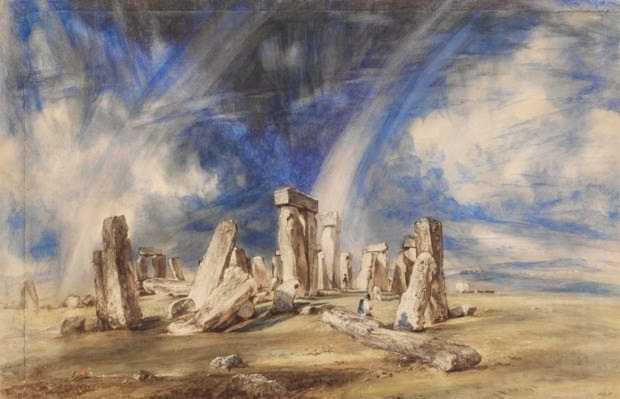… to offer a new interpretation of Britain’s best-loved artist. ... For the first time, Constable is presented alongside the old masters of classical landscape whose formal values he studiously assimilated. By combining the authority of their compositional ideas with a breathtakingly naturalistic vision that was entirely his own, Constable would ultimately transform the genre of landscape painting, and in the process shape the enduring popular image of the English countryside.I wonder how many visitors will be surprised to learn that Constable (1776-1837), like other artists of his day, studied and emulated works by his distinguished predecessors. In his case these included Claude Lorraine (who influenced Turner), Rubens, Titian, Jacob van Ruisdael and, closer to home, Gainsborough and Thomas Girlin (an artist unknown to Your Paintings, it seems). The argument is manifestly well-made, for example by putting Claude’s Landscape with Hagar and the Angel (1646 left), with Constable’s Dedham Vale (1802, right):
And from Dulwich Picture Gallery, Jacob van Ruisdael’s Landscape with Windmills near Haarlem (c.1650-2, left) and Constable’s Landscape with Windmills near Haarlem, after Jacob van Ruisdael (1830:, right)
The exhibition also provides a chance to see some of Constable’s masterpieces in their original form, images that sadly are dulled by over-reproduction, for example The Hay Wain 1821:
and Salisbury Cathedral from the Bishop’s Ground, 1823:
There is much else that is far less familiar, for example the oil sketches which seem so ahead of their time like Brighton Beach (1824, below top) and Rainstorm over the Sea (1824–8, below, lower):
Constable tends to be associated with East Anglia (‘Constable country’), but, although he was not an adventurous traveller like Turner, he painted in the South West region beyond just Salisbury, for example nearby at Stonehenge, 1835:
and at Gillingham Mill, Dorset, (1827, below, top) and Weymouth Bay with Approaching Storm (1819, below, lower):
Constable: The Making of a Master ends on 11 January 2015. Although enjoyable and informative, a full ticket price of £14 seems high when so many of the works have come from public collections, particularly the V&A’s own.








No comments:
Post a Comment